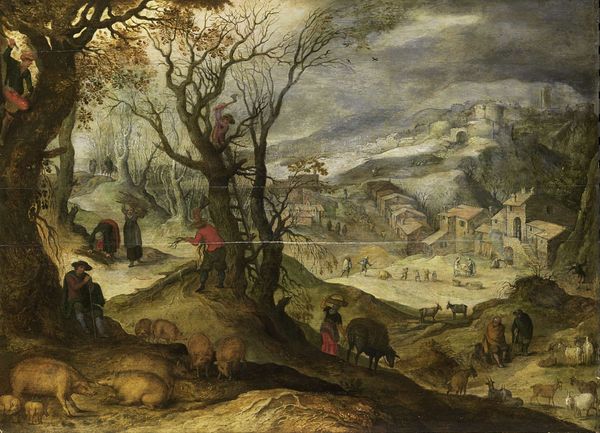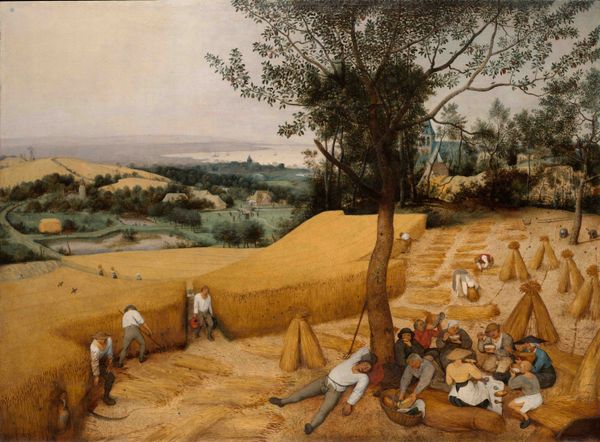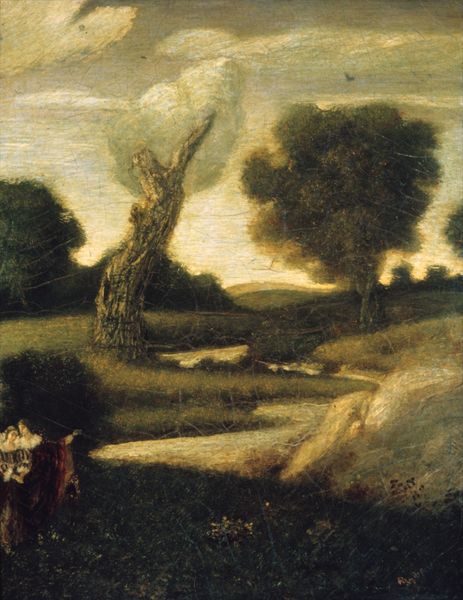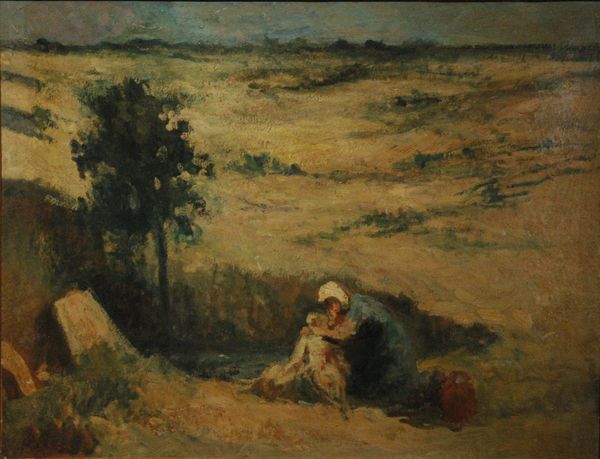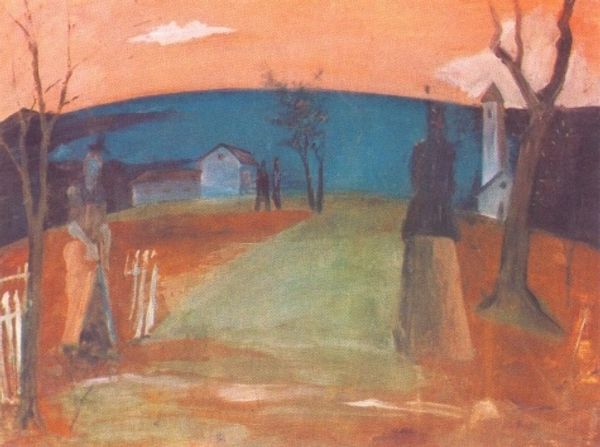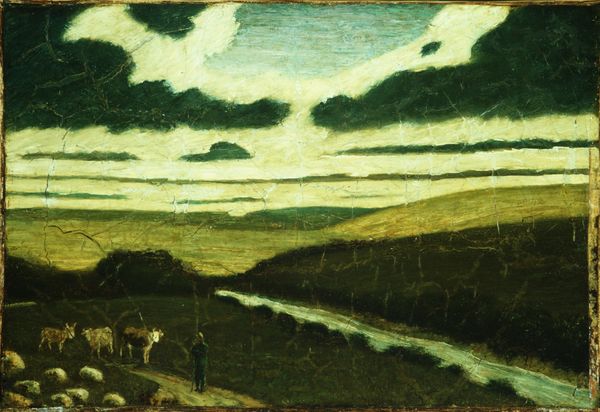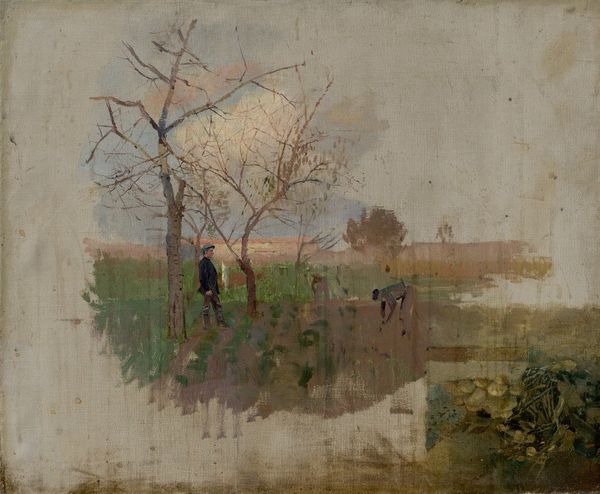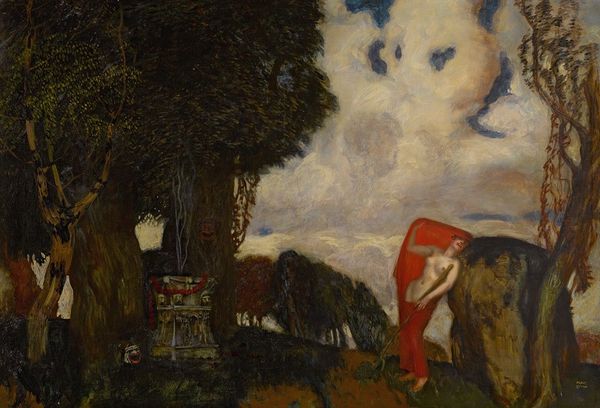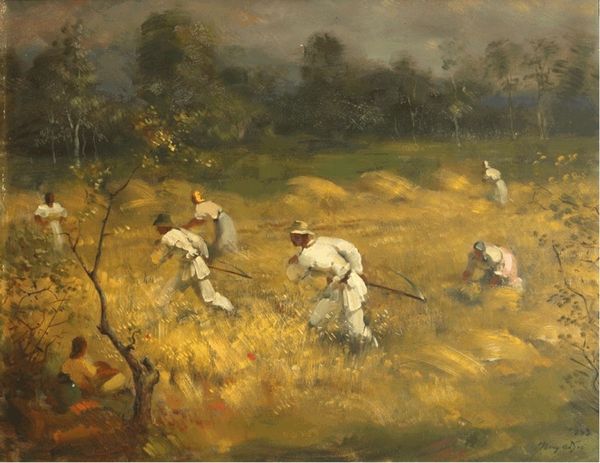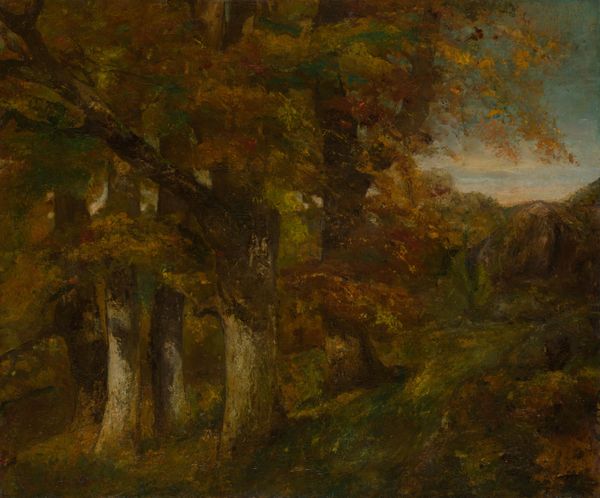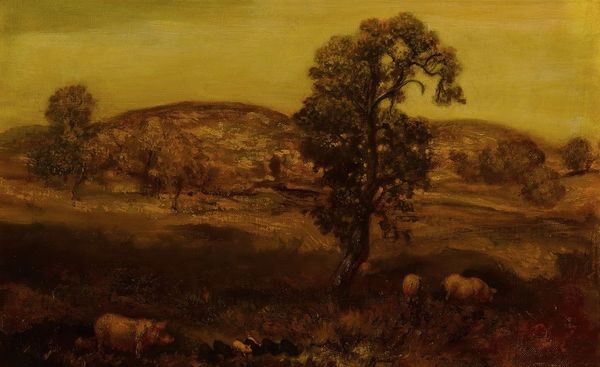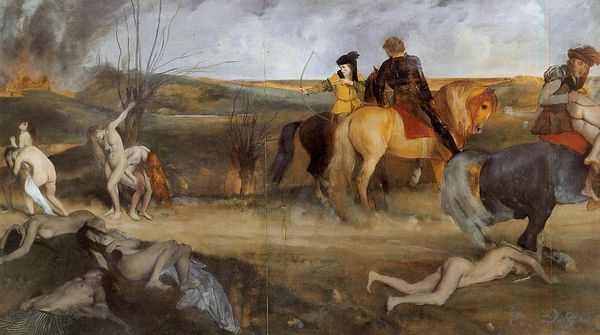
painting, oil-paint
#
painting
#
oil-paint
#
landscape
#
oil painting
#
expressionism
#
genre-painting
#
modernism
Copyright: Public Domain: Artvee
Curator: The color palette feels surprisingly muted. There’s a thick impasto; you can practically feel the labor involved. Editor: Indeed. We're looking at "Harvest in a Field," a 1918 oil painting by the Polish artist Tadeusz Makowski. What strikes me is the formal composition, particularly the use of framing with those skeletal trees on either side leading your eye to the golden field. Curator: For me, the painting exudes a quiet solemnity. The field’s earthy tones, juxtaposed against the farmers engaged in such strenuous labor. You feel the physical exertion imbued into the work itself through those visible brushstrokes. I can sense the historical context, especially given the artwork's creation toward the end of the First World War. Editor: The figures almost become anonymous—shapes bending and contorting. But do you see how that single, stark, vertical cross disrupts the otherwise rolling landscape? The rigid geometric form provides a stark contrast to the organic, flowing field. Curator: Good point. It immediately suggests something more profound than simple labor. Given Makowski's interest in folk themes and his Polish roots, this scene feels heavily linked to survival. The repetitive, almost rhythmic motions of the laborers certainly connect with me and seem almost devotional or prayerful. Editor: But aren't the traditional separations between high and low, and between fine art and manual creation challenged here? Look how the laborers themselves take up all the space within the picture. Makowski renders these workers, traditionally outside the realm of high art, as subjects worthy of attention, focusing on their role within this community. Curator: Yes, there's a leveling happening; those laborers inhabit the painting entirely; yet, I also consider the spatial composition. The winding river pulling my vision to the mountainous horizon in the distance suggests not just physical survival, but survival as freedom. Editor: Considering these combined elements, labor and symbolism intertwined... I see not just representation but maybe also a moment of shared community. Curator: Agreed. Makowski offers a nuanced view on the working classes, elevating this work from genre painting to something far more poignant. Editor: Indeed, something in the balance between its physical intensity, social significance, and symbolic undertones leaves quite a resonating impression.
Comments
No comments
Be the first to comment and join the conversation on the ultimate creative platform.
